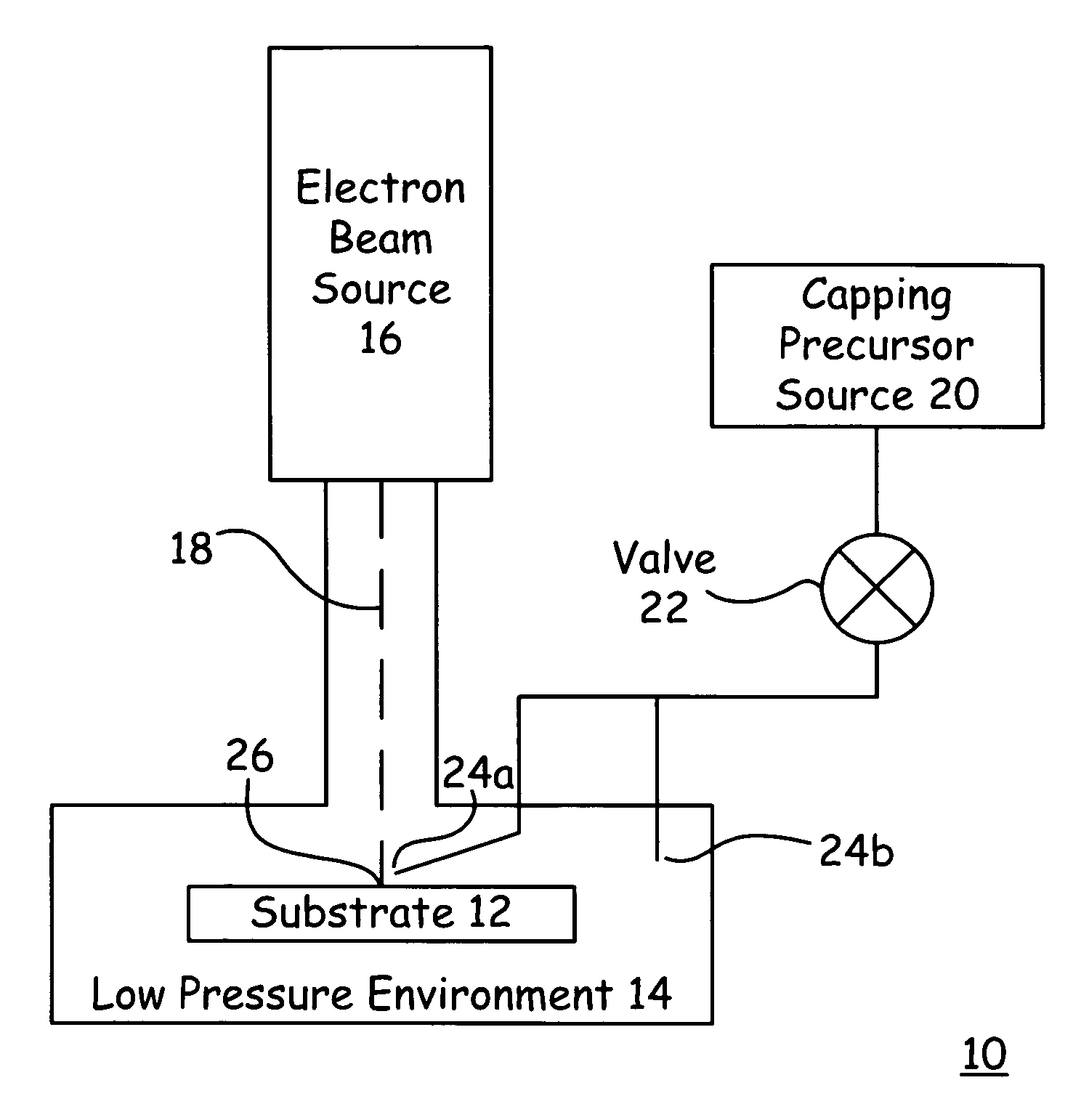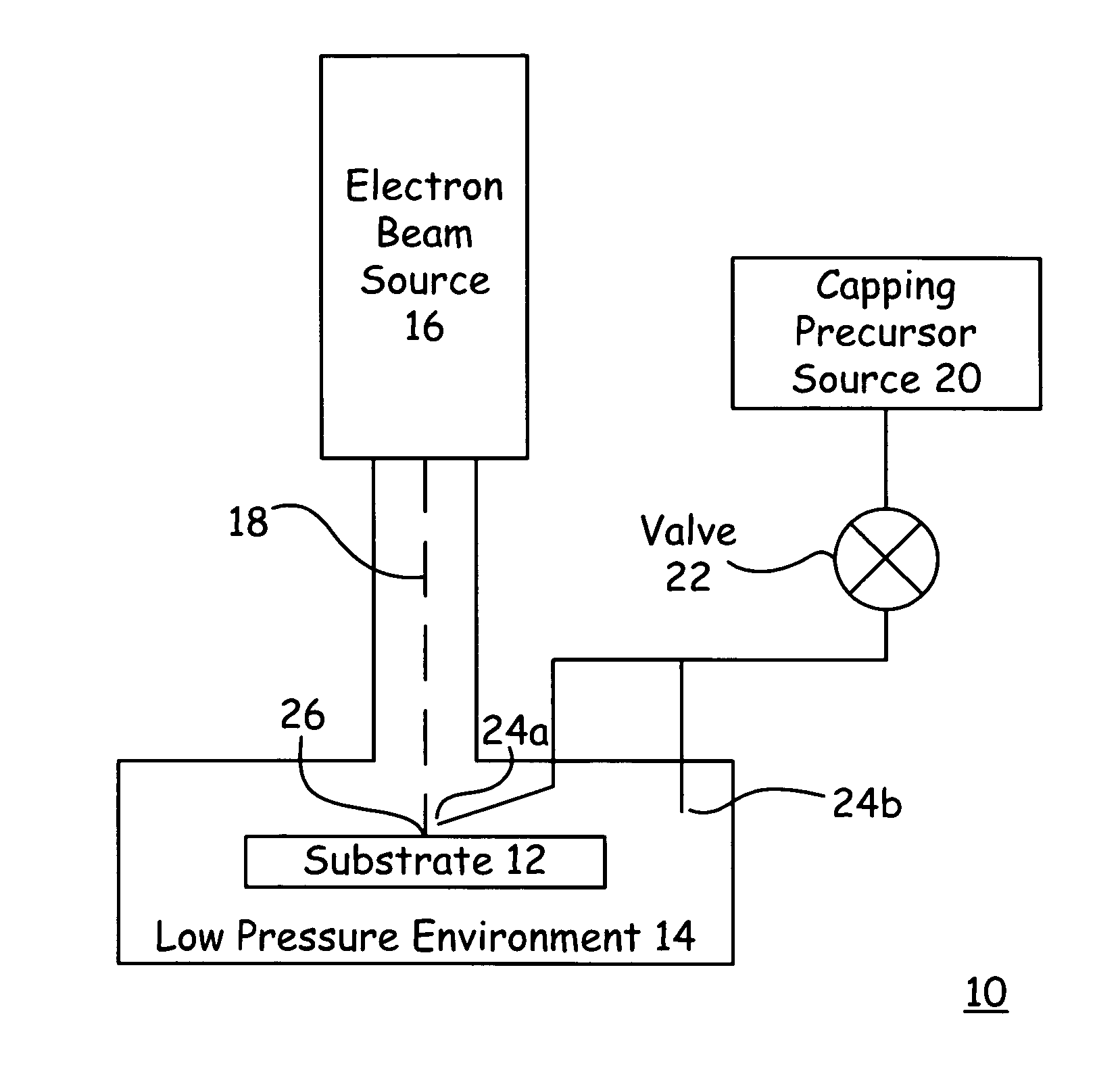Capping layer to impede atom ejection
a technology of a cap layer and an atom ejection, which is applied in the direction of material analysis using wave/particle radiation, optical radiation measurement, instruments, etc., can solve the problems of reducing precision and relative large error bar spread, and achieve the effect of reducing atom ejection and reducing atom ejection
- Summary
- Abstract
- Description
- Claims
- Application Information
AI Technical Summary
Benefits of technology
Problems solved by technology
Method used
Image
Examples
Embodiment Construction
[0014]With reference now to the FIGURE, there is depicted a functional block diagram of a system 10 according to a preferred embodiment of the present invention. The system 10 is preferably implanted as an electron stimulated x-ray metrology system, and thus includes the components and subsystems as are traditionally included with such a system, some of which are not depicted in the FIGURE so as to more completely focus attention on the more novel aspects of the system 10. The system 10 preferably includes an electron beam source 16 which directs an electron beam 18 toward a target location 26 on a substrate 12. Preferably, at least the electron beam 18 and the target location 26 of the substrate 12 are disposed within a low pressure environment 14.
[0015]A capping precursor source 20 preferably holds a store of a capping precursor, which has properties as described more completely below. The capping precursor is preferably introduced to the low pressure environment 14 through one or...
PUM
| Property | Measurement | Unit |
|---|---|---|
| pressure | aaaaa | aaaaa |
| flow rate | aaaaa | aaaaa |
| electron beam stimulated x-ray analysis | aaaaa | aaaaa |
Abstract
Description
Claims
Application Information
 Login to View More
Login to View More - R&D
- Intellectual Property
- Life Sciences
- Materials
- Tech Scout
- Unparalleled Data Quality
- Higher Quality Content
- 60% Fewer Hallucinations
Browse by: Latest US Patents, China's latest patents, Technical Efficacy Thesaurus, Application Domain, Technology Topic, Popular Technical Reports.
© 2025 PatSnap. All rights reserved.Legal|Privacy policy|Modern Slavery Act Transparency Statement|Sitemap|About US| Contact US: help@patsnap.com


